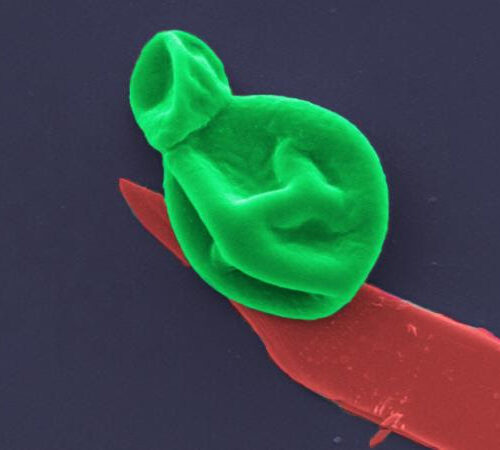By Sally Robertson, B.Sc. Apr 13 2021 Researchers in South Africa and the UK have identified alpaca-derived nanoantibodies that potently neutralize variants of the novel severe acute respiratory syndrome coronavirus 2 (SARS-CoV-2) – the agent that causes coronavirus disease 2019 (COVID-19). Notably, one of the nanoantibodies neutralized the South African variant of concern B.1.351 that has...
Success in Sight for Treating Vision Loss
Gene therapy for vision loss condition shows promise in mice. Harvard Medical School researchers have taken an important step toward developing a gene therapy to treat retinitis pigmentosa, or RP, an inherited form of progressive blindness that affects around 20 million people worldwide and can be caused by more than 60 different gene mutations. RP initially destroys...
Fungal disease diagnosis is life saver for patients with HIV and AIDS
A fungal disease diagnostic and educational programme has had a transformational impact on the mortality of HIV patients in Guatemala, according to new research. And the programme, say scientists at the Asociación de Salud Integral (ASI) in Guatemala City and The University of Manchester, will save lives in countries across the developing world if implemented. Image credit: University...
PPARα Slows Atherosclerosis by Inhibiting Vascular Cellular Senescence
It may turn out to be the case that many mechanisms of cellular regulation that slow aspects of aging function, at least in part, by slowing the pace at which senescent cells accumulate. Senescent cells induce tissue dysfunction via inflammatory signaling. Studies in which senescent cells are selectively destroyed in old tissues via senolytic drugs have resulted in...
TGen identifies gene that could help prevent or delay onset of Alzheimer’s disease
THE TRANSLATIONAL GENOMICS RESEARCH INSTITUTE PHOENIX, Ariz. — April 13, 2021 — Findings of a study by the Translational Genomics Research Institute (TGen), an affiliate of City of Hope, suggest that increasing expression of a gene known as ABCC1 could not only reduce the deposition of a hard plaque in the brain that leads to Alzheimer’s disease, but might...
DDT exposure in grandmothers linked to obesity, earlier periods in granddaughters
PUBLIC HEALTH INSTITUTE Oakland, CA-In the first study to report on the health effects of exposure to a toxic environmental chemical over three human generations, a new study has found that granddaughters whose grandmothers were exposed to the pesticide DDT have higher rates of obesity and earlier first menstrual periods. This may increase the granddaughters’...
Superbug killer: New nanotech destroys bacteria and fungal cells
RMIT UNIVERSITY IMAGE: A FUNGAL CELL (GREEN) INTERACTING WITH A NANOTHIN LAYER OF BLACK PHOSPHOROUS (RED). IMAGE MAGNIFIED 25,000 TIMES. CREDIT: RMIT UNIVERSITY Researchers have developed a new superbug-destroying coating that could be used on wound dressings and implants to prevent and treat potentially deadly bacterial and fungal infections. The material is one of the thinnest...
Power of light and oxygen clears Alzheimer’s disease protein in live mice
by University of Tokyo Credit: Unsplash/CC0 Public Domain A small, light-activated molecule recently tested in mice represents a new approach to eliminating clumps of amyloid protein found in the brains of Alzheimer’s disease patients. If perfected in humans, the technique could be used as an alternative approach to immunotherapy and used to treat other diseases caused...
Chemical modification of RNA could play key role in polycystic kidney disease
by UT Southwestern Medical Center Credit: Pixabay/CC0 Public Domain A chemical modification of RNA that can be influenced by diet appears to play a key role in polycystic kidney disease, an inherited disorder that is the fourth leading cause of kidney failure in the U.S., UT Southwestern researchers report in a new study. The findings, published...
Glaucoma may be more than just an issue of eye pressure
by NYU Langone Health Acute angle closure glaucoma of the right eye (intraocular pressure was 42 in the right eye). Credit: James Heilman, MD/Wikipedia A chemical known to protect nerve cells also slows glaucoma, the leading cause of irreversible blindness, results of a new study in rats show. Led by researchers at NYU Grossman School of Medicine,...








